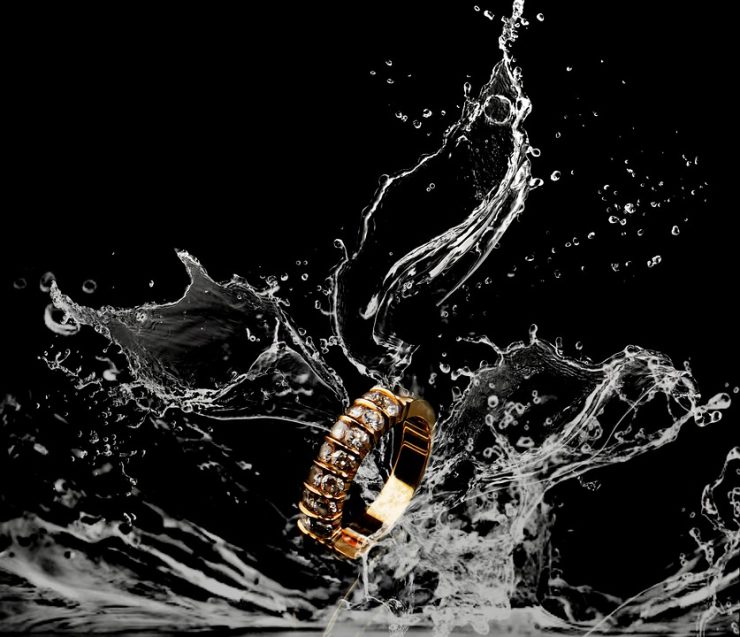Understanding the Appeal and Demand for Lab-Grown Diamonds
In recent years, lab-grown diamonds have surged in popularity due to their ethical sourcing, environmental benefits, and affordability when compared to their natural counterparts. These diamonds, produced using advanced technological processes like Chemical Vapor Deposition (CVD) or High Pressure High Temperature (HPHT), are chemically and visually identical to mined diamonds. As public awareness of the environmental and social costs of traditional diamond mining increases, more consumers are turning toward sustainable alternatives. Lab-grown diamonds are often around 30% to 40% less expensive than natural diamonds, making them accessible to a wider audience without compromising on quality. Because they are graded and certified by the same gemological standards as mined diamonds, buyers can shop with confidence—provided they select trustworthy retailers. This growing demand has led to an increase in the number of platforms offering lab-grown diamonds, both online and in brick-and-mortar stores. Knowing where to buy from is essential to ensuring authenticity, quality, and value for money.

What to Look for in a Trusted Lab-Grown Diamond Retailer
Before delving into specific vendors and platforms, it’s important to understand the key characteristics that define a trustworthy lab-grown diamond retailer. First and foremost, transparency is crucial—reputable sellers clearly label their products as lab-grown and provide comprehensive information about each diamond’s origin, grading, and production method. Additionally, all reputable vendors offer certificates from recognized gemological laboratories such as the Gemological Institute of America (GIA), the International Gemological Institute (IGI), or the American Gem Society (AGS). These certificates outline the diamond’s cut, clarity, carat weight, and color, ensuring the buyer knows exactly what they are purchasing. Moreover, good retailers offer generous return policies, secure payment options, and robust customer service. A retailer’s industry affiliations can also be telling; members of organizations like the Responsible Jewellery Council (RJC) often adhere to higher ethical and environmental standards. Finally, genuine customer reviews and third-party ratings—especially on sites like Trustpilot, BBB, and Google—provide insights into the retailer’s reliability and customer satisfaction history.
Leading Brick-and-Mortar Retailers That Offer Lab-Grown Diamonds
While online shopping dominates many sectors, brick-and-mortar stores remain essential for customers who prefer to see diamonds firsthand before purchasing. Several well-established jewelers across North America and Europe have incorporated lab-grown diamonds into their collections. For instance, Helzberg Diamonds, a U.S.-based chain with over 200 stores, offers a wide selection of certified lab-grown diamonds, often accompanied by lifetime warranties and in-person consultations. Jared, another prominent American jeweler, provides a strong in-store experience along with flexible financing options. De Beers, traditionally known for natural diamonds, has launched Lightbox Jewelry, offering affordable lab-grown diamonds in select locations and online. Zales and Kay Jewelers—both operated by Signet Jewelers—have also expanded their collections to include lab-created options, ensuring customers can explore multiple designs in person. These physical locations are advantageous for examining the sparkle and craftsmanship of the diamonds up close and seeking advice from experienced staff. Additionally, they provide opportunities for custom fittings and real-time comparisons of stones and settings.
Trusted Online Platforms for Purchasing Lab-Grown Diamonds
Online platforms offer unparalleled convenience, broader inventories, and often better pricing for lab-grown diamonds. Among the most reputable e-commerce platforms is Brilliant Earth, known for its commitment to sustainability and ethical sourcing. It offers a vast inventory of lab-grown diamonds, customizable settings, and high-resolution 360-degree videos of each stone. James Allen is another leading platform praised for its interactive viewing technology and educational tools, allowing customers to make informed decisions. Each diamond listing includes certification and detailed grading. Clean Origin, founded exclusively to sell lab-grown diamonds, emphasizes transparent pricing and sustainability, offering a 100-day return policy—an industry-leading offer. Vrai, backed by Diamond Foundry, presents lab-grown diamonds that are created using renewable energy, appealing to environmentally conscious consumers. Furthermore, Miadonna combines lab-grown stones with socially responsible business practices, including programs that fund educational initiatives in mining communities. These online platforms often allow customers to customize their jewelry, compare prices easily, and receive their purchases in secure, insured packaging, making them ideal for tech-savvy shoppers or those without easy access to physical stores.
Certifications and Grading: Why They Matter When Buying Online or Offline
Whether buying online or in-store, certification is one of the most important factors in determining the quality and value of a lab-grown diamond. Reputable sellers provide certificates issued by independent and internationally recognized gemological laboratories. The GIA, though initially cautious about grading lab-grown diamonds, now offers comprehensive reports detailing all aspects of a stone’s quality. The IGI is another major player, known for its wide involvement in grading lab-created diamonds. Certificates will include information on the Four Cs—cut, clarity, carat, and color—as well as comments on polish, symmetry, and fluorescence. Importantly, these documents also identify the diamond as laboratory-grown, helping prevent fraud and misrepresentation. Without certification, buyers have no objective proof of what they are purchasing. Trusted retailers always supply these documents and often make them viewable online before purchase. This level of transparency not only builds customer trust but also enables fair price comparisons and enhances resale value. Avoiding uncertified diamonds, especially from unofficial or unregulated sellers, is essential to safeguarding your investment.

Global Retailers and International Access to Lab-Grown Diamonds
As demand for lab-grown diamonds increases worldwide, many international retailers have begun offering these sustainable alternatives, expanding access beyond North America. In the United Kingdom, Pure Carats and Taylor & Hart are two leading names in the lab-grown diamond space, offering fully certified stones with custom engagement ring design services. Taylor & Hart, in particular, specializes in bespoke jewelry and ensures all diamonds are conflict-free and fully traceable. In Australia, retailers like Ritani and Novita Diamonds provide a wide inventory of lab-created stones, complete with grading reports and local customer support. Meanwhile, Courbet, a Paris-based brand, combines French luxury design with lab-grown diamonds produced through carbon-neutral methods. European consumers also have access to Baunat, which offers high-end lab-grown diamond options with ethical credentials and precise craftsmanship. These global retailers often ship internationally, making lab-grown diamonds more accessible than ever. They typically maintain websites with multilingual support, international certification recognition, and various currency options, offering a seamless shopping experience for customers across continents.
Red Flags to Watch for When Buying Lab-Grown Diamonds
Despite the rising legitimacy of the lab-grown diamond industry, buyers must still be cautious of potential scams or low-quality offers, particularly online. One significant red flag is the absence of certification—any diamond sold without documentation from a recognized laboratory like GIA, IGI, or AGS should be treated with skepticism. Unusually low prices that seem too good to be true may indicate poor-quality stones, undisclosed treatments, or even imitation diamonds such as cubic zirconia or moissanite being passed off as lab-grown. Retailers that offer little or no information about the origin, grading, or production process of their diamonds should also be avoided. A lack of customer reviews, incomplete return policies, or vague business addresses can signal an untrustworthy vendor. Consumers should also verify domain security (e.g., “https://”), use well-reviewed marketplaces, and favor companies with a solid online presence and track record. If the seller does not provide clear visuals, 360-degree videos, or magnified views of the stone, it may be difficult to assess its true quality.
Tips for Getting the Best Value When Buying Lab-Grown Diamonds
To get the most value from your lab-grown diamond purchase, buyers should begin by educating themselves on the 4 Cs: carat weight, cut, color, and clarity. Among these, cut quality typically has the greatest impact on a diamond’s brilliance and should not be compromised. Choosing slightly lower grades in color (e.g., G or H instead of D or E) or clarity (e.g., VS1 or VS2 instead of IF or VVS1) can result in significant savings without noticeably affecting appearance, especially when the stone is set in a ring. It’s also wise to compare multiple retailers, taking note of diamond specifications, price points, return policies, and financing options. Using online tools that allow for side-by-side comparisons of diamonds can be especially useful. Furthermore, some retailers offer discounts for purchasing loose stones and settings separately or provide seasonal promotions. Consider your long-term needs as well—select vendors that offer free resizing, lifetime warranties, or upgrade programs in case you wish to trade in your diamond later. Overall, knowledge and due diligence are the best tools for ensuring both quality and financial value.
Comparing Lab-Grown Diamonds with Natural Diamonds at Point of Sale
One key decision buyers face is whether to purchase a lab-grown or natural diamond, especially since the two are virtually indistinguishable to the naked eye. At point of sale, especially in hybrid retailers that carry both types, it’s important to ask the right questions and understand what sets each category apart. Lab-grown diamonds typically cost 30–50% less than natural diamonds of equivalent quality, but they may have lower resale value since the market is still stabilizing. However, many consumers prioritize the sustainability, ethical sourcing, and traceable supply chain that lab-grown diamonds provide. Natural diamonds, by contrast, may carry greater sentimental or historical value, especially if heirloom potential is important to the buyer. Trusted retailers will always disclose a diamond’s origin and provide side-by-side comparisons to aid the customer in making a well-informed decision. When browsing, ask to see both types under magnification, review grading certificates, and explore setting options that enhance the unique beauty of each type. Being well-informed about the pros and cons of each option will help ensure satisfaction with your purchase.
Final Thoughts: Where to Buy with Confidence
Buying lab-grown diamonds requires more than just choosing the shiniest stone; it demands careful consideration of quality, certification, vendor credibility, and long-term value. Reputable retailers—both online and in-store—offer detailed product information, strong customer service, and certified stones from respected gemological labs. Whether you choose to browse a trusted online platform like Brilliant Earth or James Allen, or visit a local jeweler such as Helzberg Diamonds or Taylor & Hart, the key is transparency. Avoid vendors that lack clear policies, customer feedback, or industry accreditation. Use certification reports to confirm value and authenticity, and leverage available technology—such as 360° viewing tools and customization features—to make an informed decision. As the lab-grown diamond industry matures, more trustworthy platforms are emerging, making it easier than ever to purchase high-quality, sustainable, and stunning diamonds with peace of mind. By following expert tips and identifying red flags, you can invest in a piece of jewelry that not only sparkles beautifully but also aligns with your values and budget.